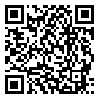Volume 5, Issue 1 (Continuously Updated 2022)
Func Disabil J 2022, 5(1): 0-0 |
Back to browse issues page
Download citation:
BibTeX | RIS | EndNote | Medlars | ProCite | Reference Manager | RefWorks
Send citation to:



BibTeX | RIS | EndNote | Medlars | ProCite | Reference Manager | RefWorks
Send citation to:
Riazi A, Firouzi N, Salehi R. Evaluating the Performance of Anterior Segment Optical Coherence Tomography MS-39 in Evaluating Tear Film and Comparing the Results With Tear Break-up Time Results by Slit Lamp. Func Disabil J 2022; 5 (1) : 56
URL: http://fdj.iums.ac.ir/article-1-187-en.html
URL: http://fdj.iums.ac.ir/article-1-187-en.html
1- Department of Optometry, Rehabilitation Research Center, Iran University of Medical Sciences, Tehran, Iran.
2- Department of Optometry, Faculty of Rehabilitation, Iran University of Medical Sciences, Tehran, Iran. ,Nargesfiroozi1374@gmail.com
3- Department of Rehabilitation Managment, Faculty of Rehabilitation, Iran University of Medical Sciences, Tehran, Iran.
2- Department of Optometry, Faculty of Rehabilitation, Iran University of Medical Sciences, Tehran, Iran. ,
3- Department of Rehabilitation Managment, Faculty of Rehabilitation, Iran University of Medical Sciences, Tehran, Iran.
Abstract: (1125 Views)
Background and Objectives: Several methods exist to evaluate tear film, the most widely used of which is the tear break-up time (TBUT) test. This test is an invasive method that involves the use of fluorescein and stimulates the tear reflex. A chief security officer (CSO) company has added a feature called non-invasive tear film breakup time (NIBUT) to the new version of its OCT device, MS-39, which checks dry eyes without using fluorescein. In this research, the aim is to compare the results of these two methods to examine dry eyes.
Methods: The evaluation starts with measuring NIBUT in MS-39. NIBUT is repeated three times in each person with an interval of 30 second. We give 30 second to rebuild tears. Then TBUT is measured three times with fluorescein using a slit lamp at 30-second intervals. Finally, the average is taken from the measurements.
Results: The average results of NIBUT are 10 second and the average results of TBUT are 10 second and are equal. The distribution of NIBUT and TBUT results by the Kolmogorov-Smirnov test is normal. The distribution of TBUT results is lower than NIBUT with the Shapiro-Wilk test; That is, both methods have a normal distribution, but the TBUT method shows better findings in the field of normal distribution.
Conclusion: The average of both tests is equal to each other. The distribution of findings with both methods is normal, therefore no significant difference is observed between the average findings with both methods, choosing the appropriate method for tear film is the responsibility of the doctor and the patient.
Methods: The evaluation starts with measuring NIBUT in MS-39. NIBUT is repeated three times in each person with an interval of 30 second. We give 30 second to rebuild tears. Then TBUT is measured three times with fluorescein using a slit lamp at 30-second intervals. Finally, the average is taken from the measurements.
Results: The average results of NIBUT are 10 second and the average results of TBUT are 10 second and are equal. The distribution of NIBUT and TBUT results by the Kolmogorov-Smirnov test is normal. The distribution of TBUT results is lower than NIBUT with the Shapiro-Wilk test; That is, both methods have a normal distribution, but the TBUT method shows better findings in the field of normal distribution.
Conclusion: The average of both tests is equal to each other. The distribution of findings with both methods is normal, therefore no significant difference is observed between the average findings with both methods, choosing the appropriate method for tear film is the responsibility of the doctor and the patient.
Article number: 56
Keywords: Tear film, Non-invasive tear film breakup time (NIBUT), Tear break-up time (TBUT), Optical coherence tomography (OCT) MS-39, Slit lamp
Type of Study: Research |
Subject:
Optometry
Received: 2022/09/6 | Accepted: 2022/10/15 | Published: 2022/02/3
Received: 2022/09/6 | Accepted: 2022/10/15 | Published: 2022/02/3








